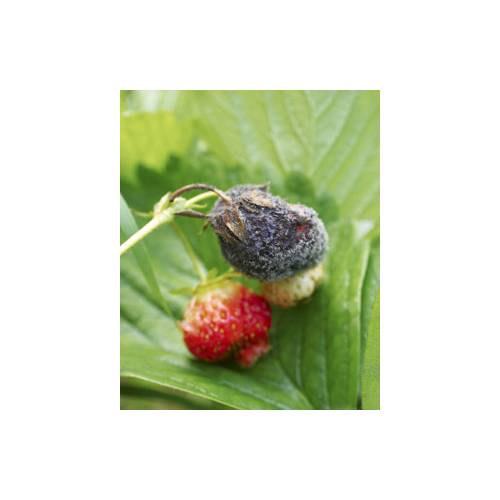
Diseases
Grey mould
- Details
-
This disease occurs in confined places with high levels of humidity. It is very contagious and can cause a lot of damage to susceptible plants.
The symptoms
It is often only when this disease has reached an advanced stage that we notice its presence. The attacked organs are totally withered and soft. They are covered with a thick grey coloured mould. A smoke like powder is seen when they are rubbed. Before this stage the grey mould has withered away, the organs affected, often unnoticed because it is unspectacular. All plants that are kept under cover are susceptible to this disease. It can also attack the fleshy organs of outdoor plants in wet weather (opening buds, young fruits...).
Lifecycle
Grey mould is caused by a fungal spore (microscopic germ) that is carried in the air or on the feet of flying insects. The fungus establishes its filaments in the tissue of the plant and they spread causing it to wither. Once the rot has reached a certain stage, the filaments send out reproductive organs that give the affected parts a furry like appearance. These in turn liberate further spores that spread the infection to other plants. Grey mould develops when the air is sufficiently humid. The fungus responsible must have a confined atmosphere for it to develop.
How to fight it
The first line of attack against grey mould is prevention (see below). Once the disease is present, you must reduce the level of ambient humidity by increasing the airflow. A spraying with bouillie bordelaise solution or soluble sulphur will stop the progression of the disease. Charcoal powder will have the same effect. Remove all parts of the plant that are affected by the disease and that could contaminate the rest of the plant.
How to avoid it
If the plants are well ventilated then the conditions are not favourable for the development of grey mould. However if the weather is wet then the risk of grey mould is very high. In this case, it is a good idea to spray the plants as a method of prevention. A diluted solution of horsetail extract is usually sufficient in most cases. For very susceptible plants (young seedlings in a mini greenhouse), it is best to dust the soil with charcoal powder and at the same time ensure the young plants are not kept in a confined air space.
Information
In the case of vines, the "powdery vine mildew" which gives wines a particular sweetness is caused by the same fungus as that responsible for grey mould. What is a damaging disease for one plant can be a welcome friend for another! - Photos (1)

